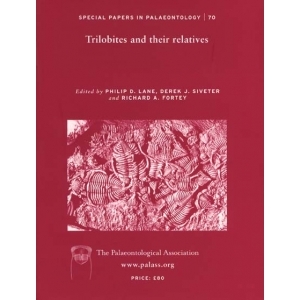
Special papers in Palaeontology: 70
<br />2003
<br />
<br />Trilobites and their relatives (proceedings of Oxford conference 2001)
<br />Ed P. D. Lane et al.
<br />
<br />ABSTRACT. The phosphatocopid arthropod Klausmuelleria salopensis gen. et sp. novo is described, based on threedimensionally preserved phosphatised COrsten' -type) material. from the lower Cambrian of Shropshire. It is the oldest known occurrence of an animal with its body and complement of limbs preserved in three dimensions. Evidence from its appendage morphology supports the notion that phosphatocopids are the sister group to the Eucrustacea and therefore that phosphatocopids are not ostracods. The monophylum consisting of the Phosphatocopida and Eucrustacea is herein formally named Labrophora. The find signifies the occurrence of Crustacea in the early Cambrian. and the coeval presence of Eucrustacea. Less derived branches of the Arthropoda and other less derived Bilateria must have originated still earlier in time. The 'Orsten' -type Konservat-Lagerstiitte in Shropshire represents an early stratigraphical source for exceptionally well-preserved metazoan fossils and has potential for the recovery of additional specimens.
<br />
<br />KEY WORDS: Cambrian. England. phosphatocopid, crustacean. three-dimensions, soft parts